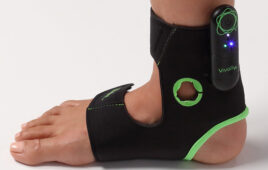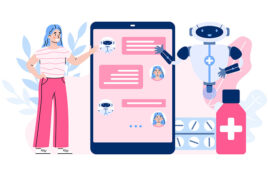Orthogonal, a Chicago-based medical device software company, is pleased to congratulate long-term client Nanowear on their recent FDA Class II 510(k) clearance for their flagship medical device, SimplECG.
With this FDA approval, Nanowear has cleared a significant hurdle in commercializing remote cardiac monitoring devices that rely on cloth-based nanosensors. While other companies have attempted to focus on wearable health care devices, few companies have pushed the boundaries as far as Nanowear.
Bernhard Kappe, Orthogonal’s CEO, said “Nanowear is the first company to provide both patient and physician-friendly mechanisms to facilitate the acquisition and management of health and diagnostic data through cloth-based nanosensor technology.”

Orthogonal Logo (Credit: PR Web)
With Nanowear’s proprietary nanosensor technologies, everyday undergarments — such as T-shirts and brassieres — can be designed to collect ECG, heart rate and respiratory data points and transmit them to physicians and clinicians using web and mobile apps; Bluetooth technologies; iOS smartphones; HIPAA-compliant databases; and, feature-rich clinical systems.
In discussing the market implications of innovations such as SimplECG, Kappe said, “this is precisely what a value-added healthcare economy needs: companies that leverage new technologies to extend the care continuum beyond the hospital and into the everyday lives of millions of Americans wrestling with heart disease and other ailments.”
As the medical software vendor tasked with capturing and transmitting diagnostic data, Orthogonal medical software engineers used Agile development processes to design and build robust integrated systems around the nanosensors. Engineers designed frameworks for storing and transmitting encrypted patient data to HIPAA-compliant mobile applications and to the cloud so that clinicians could securely access patient data.
“It is always exciting to see the medical validation of a startup vision. Nanowear’s team, although young, never wavered from their goal to create a best-in-class diagnostic tool based on unobtrusive undergarments. We are proud to have been a partner in the process.”




